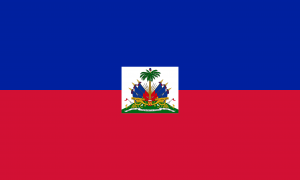Language/Haitian/Vocabulary/Clothes
Hi Haitian learners! 😊
In this lesson, we will learn about the vocabulary related to clothes in Haitian. We will also discuss some cultural aspects related to clothing in Haiti. Don't forget to check out the Vocabulary category for more words and phrases.
Clothing in Haiti[edit | edit source]
Traditional clothing in Haiti is known for its vibrant colors and patterns. Women usually wear long skirts, known as jupes, and a matching blouse or shirt. Men typically wear a shirt and pants made of lightweight fabric. The national costume is called the karabela and is worn for special occasions. It consists of a colorful blouse and a long skirt for women and a white shirt and pants for men.
In recent years, there has been a trend towards incorporating more Western-style clothing into Haitian fashion. However, traditional clothing is still commonly worn, especially in rural areas.
Vocabulary[edit | edit source]
Here are some words and phrases related to clothing in Haitian:
| Haitian | Pronunciation | English |
|---|---|---|
| soulye | /su.ljɛ/ | shoes |
| chapo | /ʃa.po/ | hat |
| chemiz | /ʃɛ.miz/ | shirt |
| jip | /ʒip/ | jeans |
| blous | /blus/ | blouse |
| jipi | /ʒi.pi/ | T-shirt |
| pantalon | /pan.ta.lɔn/ | pants |
| jumèl | /ʒy.mɛl/ | twin (for identical clothing) |
| jwèt | /ʒwɛt/ | set (for matching clothing) |
| kay diven | /kaj di.vɛ̃n/ | diva shoes (high-heeled shoes) |
Here is a dialogue to illustrate the vocabulary in context:
- Person 1: Gen yon jwèt soulye sa ki ale avèk chemiz mwen yo. (/ɡɛ̃ jɔ̃ ʒwɛt su.ljɛ sa ki alɛ avɛk ʃɛ.miz mwɛ̃ jɔ/ - "I have a set of shoes that goes with my shirts.")
- Person 2: Ok, mwen mande kote ou te achte yo? (/ɔk, mwɛ̃ mɑ̃d kɔtə u tɛ aʃ.tɛ jo/ - "Okay, where did you buy them?")
Cultural Information[edit | edit source]
In Haiti, clothing can be an important indicator of social status. People may dress up for special occasions, such as weddings and church events. It is not uncommon to see women wearing elaborate headpieces and vibrant colors on these occasions.
However, in rural areas, where access to Western-style clothing is limited, traditional clothing is still very much a part of daily life. This is especially true for women, who are often responsible for making their own clothing.
If you want to learn more about Haitian culture, don't hesitate to join Polyglot Club. You can also find native speakers and ask them any questions!
➡ If you have any questions, please ask them in the comments section below.
➡ Feel free to edit this wiki page if you think it can be improved. 😎
Other Lessons[edit | edit source]
- How to Say Hello and Greetings
- Count to 10
- Parts of the Body
- Idiomatic Expressions
- Food
- Days of the Week
- Education
- Fruits
- Greetings
- Feelings and Emotions
Sources[edit | edit source]
- Clothing Names Vocabulary List in Haitian Creole - Haitian Creole Net
- Clothing words in Creole - Haitian Creole Net

